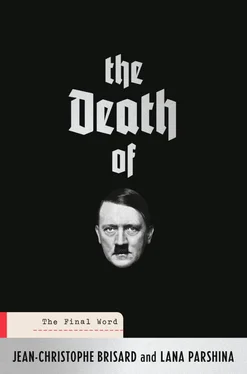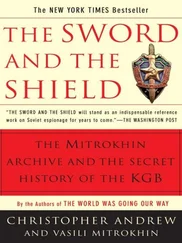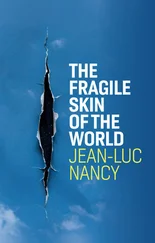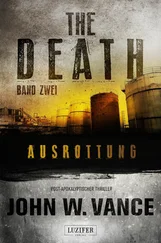Erich Kempka, his personal chauffeur, was present on that occasion. “On the Führer’s fifty-sixth birthday, 20 April 1945, I reflected on past years when the German people celebrated this day and held great celebrations and parades.” [11] Erich Kempka, I was Hitler’s Chauffeur: The Memoirs of Erich Kempka , Barnsley, Frontline Books, 2012, p. 57.
Gone were the grand parades! Gone the military bands with their bombastic music in the square of the Technische Hochschule in Berlin. The cohorts of admirers lined up by the side of the road clutching little black swastika flags lay crushed by the Allied bombs. As to the hundreds of diplomats who had come from all over the world to offer their allegiance to the strong man of a conquering Germany, where were they now?
There is an astonishing document that sums up this fall of the Nazi regime. It is in the Russian State Military Archives in Moscow. When the Red Army entered the Reich Chancellery on 1 May 1945, they laid hands on a curious book. It is a large book bound in red leather, emblazoned with an eagle holding a laurel wreath with a swastika in the middle. This document is nothing other than a visitor’s book. Foreign diplomats invited to major ceremonies had to write their names in it. The feasts celebrated included New Year’s Eve, the national German day of celebration, and, of course, the Führer’s birthday. Every guest signed, gave their function and sometimes declared their fervent admiration of the Nazi regime.
On 20 April 1939, Hitler celebrated his fiftieth birthday. He had already been in power for six years, he had annexed Austria, the Sudetenland, and then Bohemia-Moravia, he had openly persecuted the German Jews, and he had caused ever greater alarm to the European democracies. But no matter. The dictator was no less available to the sixty or so diplomats who had come to pay him tribute. Their decoratively written signatures are lined up over six pages of the visitors’ book. They include representatives from France and the United Kingdom. For them, it would be the last opportunity to wish Hitler a happy birthday, because in less than five months, on 1 September, war would be declared between those two countries and Germany.
Let us turn the pages. Here we are in 1942. Hitler is celebrating his fifty-third birthday. He’s stopped making the western democracies nervous; he terrifies them now when he isn’t actually destroying them. The list of victims is long: France, Belgium, the Netherlands, Denmark, Norway, Poland… The Führer is at the height of his power, and that is apparent from the number of diplomats attending his birthday party. Over a hundred signatures over twelve pages. Admittedly there are no French people now, no British names, and even fewer Americans, but there are still Italians, Japanese, Spaniards. And one loyal guest at the Nazi celebrations, the apostolic nuncio of Pope Pius XII.
20 April 1945. The last date in this imposing collection of signatures. No more block capitals at the top of the chapter. One imagines that the Führer’s personal secretariat were short of time. In its place, a simple date hastily scribbled in the margin: 20.4.45. And five signatures from diplomats. Five. Who are they? Their names are barely legible, the writing seems so nervous. The ones that can be deciphered are the following: an Afghan ambassador, a Thai, one from China. Where are the other ambassadors? The ones who were honoured to attend the regime’s celebrations? They have disappeared. Even the representative of the Vatican no longer added his signature to this now cursed book. But the apostolic nuncio hadn’t missed a single Nazi ceremony since 1939. He was still there for the New Year’s celebration on 1 January 1945. His conscientious handwriting on these villainous pages attests to diplomatic connections that many would prefer to keep under wraps.
On 20 April 1945, everyone is fleeing Hitler. All those who can, or who dare. Even among the Nazis, not least in the first circle of senior leaders, including one of the most emblematic of the regime: Marshal Göring.
Hermann Göring certainly did come to Berlin. In line with his outrageous temperament, he enthusiastically swore his profound attachment, his eternal loyalty and his certainty of imminent victory. Then he fled as quickly as possible for the mountains of Obersalzberg. Not for fear of the fighting in Berlin but, he claimed, to prepare the counter-offensive in the Bavarian Alps. The hasty departure of the spirited marshal did not go unnoticed in the bunker. “After a surprisingly short time, Göring left Hitler’s office and the Führerbunker,” wrote the Führer’s personal chauffeur, Erich Kempka. “The same day he fled Berlin and never came back.” [12] Erich Kempka, I was Hitler’s Chauffeur , op. cit., p. 58.
Göring’s escape shocked the other inhabitants of the bunker, but more than that, it terrified them. Would they have time to wait for Hitler’s decision to leave Berlin? Adjutant Rochus Misch was a telephone operator in the Führerbunker. He bears witness to the danger that lay in wait: “On 20 April, the day of Hitler’s fifty-sixth birthday, Soviet tanks had reached the outskirts of the capital. The city was practically encircled. That day or the day before, someone went down to the bunker to announce that the roar of artillery fire could be heard.” [13] Rochus Misch, J’étais garde du corps d’Hitler (1940–1945), Paris, Le Cherche Midi, 2006, p. 193.
For the Russian troops, 20 April 1945 was an extremely worrying date. What if the rumours of a Nazi special weapon, a weapon that could turn the war around, were true? According to German propaganda, that weapon was due to be unveiled on the day of Hitler’s birthday. “Some people had seen tarpaulin-covered vehicles transporting the secret weapon in question,” said Elena Rzhevskaya, a German interpreter with the Red Army. “We fantasised, trying to imagine its destructive force. We waited for the announcement on the radio.” [14] Elena Rzhevskaya, Carnets de l’interprète de guerre , Paris, Christian Bourgois Éditeur, 2011, p. 287.
But nothing came. That new weapon was the atom bomb. Nazi engineers had been working on it for years. The Allied air raids on German industrial sites over several months considerably hampered Hitler’s mad project. The Armaments Minister, Albert Speer, speculated in his memoirs that “with extreme concentration of all our resources, we could have had a German atom bomb by 1947, but certainly we could not beat the Americans, whose bomb was ready by August 1945.” [15] Albert Speer, Inside the Third Reich , London, Orion, 1970, p. 229.
“This is the final act.”
(Erich Kempka, Hitler’s personal chauffeur)
The Russian tanks were now no more than a few kilometres from Berlin. The Soviets threatened the capital on three fronts: to the north, the east, and the south. To the west, on the other hand, the city was still spared. The Anglo-American offensive had slowed down, and their first troops were 500 kilometres away from the outskirts of Berlin. Hitler took advantage of the fact to transfer his units from the western front towards the Russians.
That didn’t make the situation any less catastrophic. The Soviet shells were now reaching the Chancellery gardens. The exploding bombs blew in the windows of Hitler’s palace, dug furrows in the marble walls as if they were made of cardboard, and the noise echoed all the way down to the underground shelters. Once more, the Führer’s entourage begged him to flee. There was still time. Gatow Airport, south-west of Berlin, was accessible. Hans Baur, Hitler’s personal pilot, had moved to the bunker some weeks previously to be ready to evacuate the Führer at any moment. Several aeroplanes had been specially prepared, and were only waiting for a green light to take off. Bormann, the most trusted member of Hitler’s inner circle, was also urging an immediate departure. The previous day he had even taken the initiative of accelerating the transfer of Berlin General Headquarters to Obersalzberg.
Читать дальше












